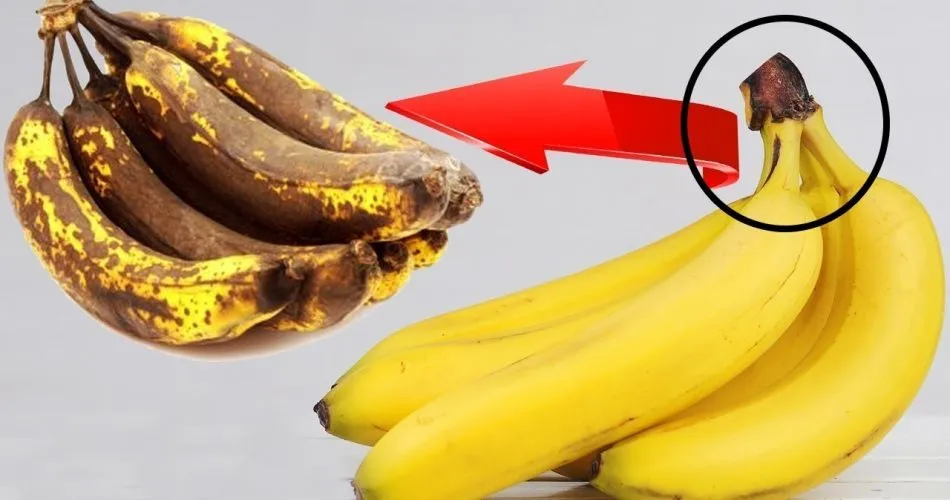Bananas are a popular and healthy fruit, but they can quickly become overripe and develop a rotten, black appearance after just a few days of sitting on the kitchen counter. However, with a simple method, you can extend their shelf life and prevent them from spoiling too quickly. In this article, we will explore a technique that will help you keep your bananas fresh for a longer time.
The Problem with Rotten Bananas
Bananas are climacteric fruits, which means they continue to ripen even after they are harvested. As they ripen, bananas produce ethylene gas, a natural plant hormone that speeds up the ripening process. This is why bananas can go from green to yellow to brown and black in just a few days, especially in warm temperatures.
When bananas become overripe, their texture changes, becoming mushy and soft. The skin may turn brown or black, and the fruit inside may have a fermented smell and taste. This can be unappealing to eat, and many people end up discarding overripe bananas, resulting in food waste.
The Method to Extend Banana Shelf Life
To extend the shelf life of your bananas and prevent them from becoming rotten and black too quickly, you can use a simple method involving plastic wrap. Here’s how you can do it:
Step 1: Separate the Bananas:
If you have a bunch of bananas, gently separate them from each other. This will help to slow down the ripening process as it prevents the bananas from releasing excessive ethylene gas, which can accelerate ripening.
Step 2: Wrap the Stems:
Take a small piece of plastic wrap and tightly cover the stems of each banana. The plastic wrap will help to block the release of ethylene gas from the stems, which will slow down the ripening process.
Step 3: Store at Room Temperature:
Once you have wrapped the stems of all the bananas, place them back on the counter or in a fruit bowl at room temperature. Avoid placing them in the refrigerator, as bananas are sensitive to cold temperatures and can turn brown or black when refrigerated.
Step 4: Check Regularly:
Check the bananas regularly for ripeness. When they have reached the desired ripeness, you can remove the plastic wrap and enjoy them. If you prefer slightly greener bananas, you can leave the plastic wrap on for longer to slow down the ripening process.
Why Does This Method Work?
The plastic wrap method works by reducing the exposure of bananas to ethylene gas, which is produced by the bananas themselves and speeds up the ripening process. By blocking the release of ethylene gas from the stems, the bananas ripen at a slower rate and stay fresher for a longer time.
This method is also effective because it allows you to separate the bananas, preventing them from ripening too quickly in a bunch. When bananas are kept together in a bunch, they release more ethylene gas, which can accelerate the ripening process and result in faster spoilage.
To maximize the freshness and shelf life of bananas, it’s recommended to store them in a cool, dry place and consume them within a reasonable timeframe. If you have bananas that you won’t be able to consume before they start to spoil, consider using them for baking, freezing them for later use in smoothies or recipes, or donating them to reduce food waste.
